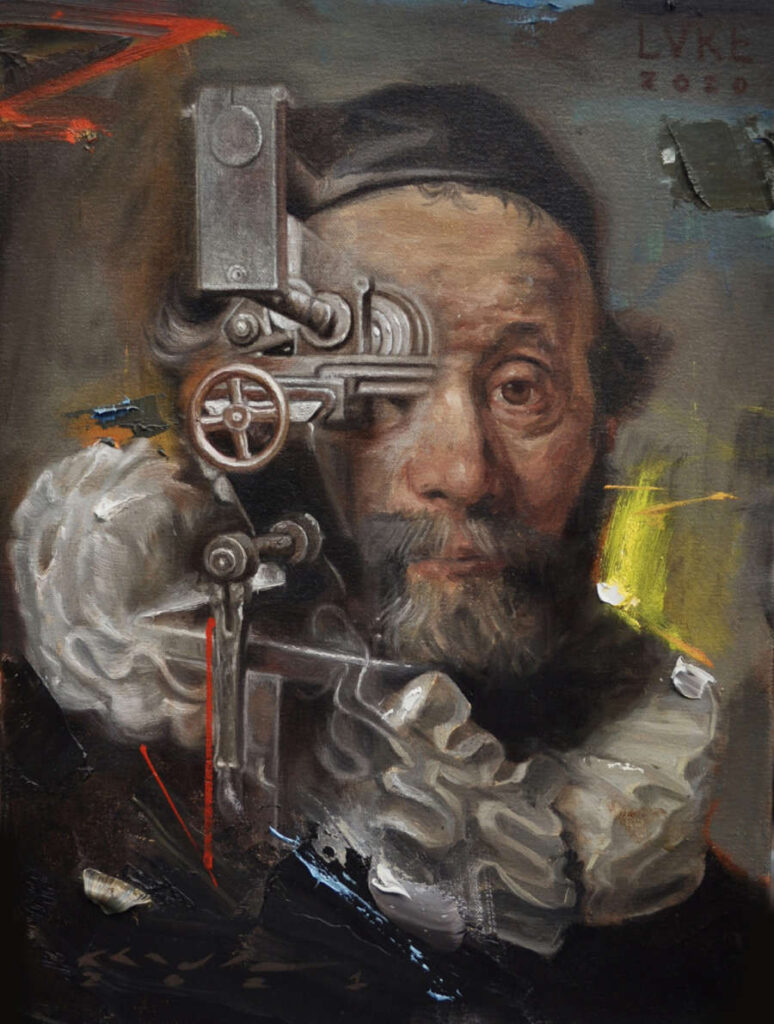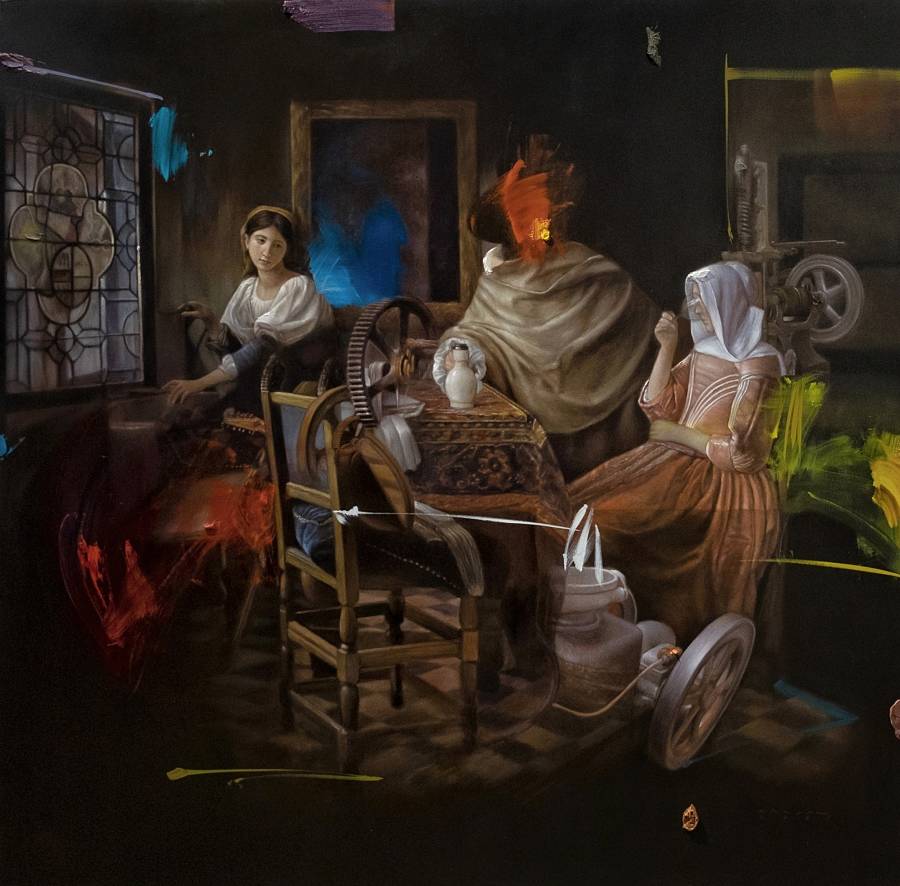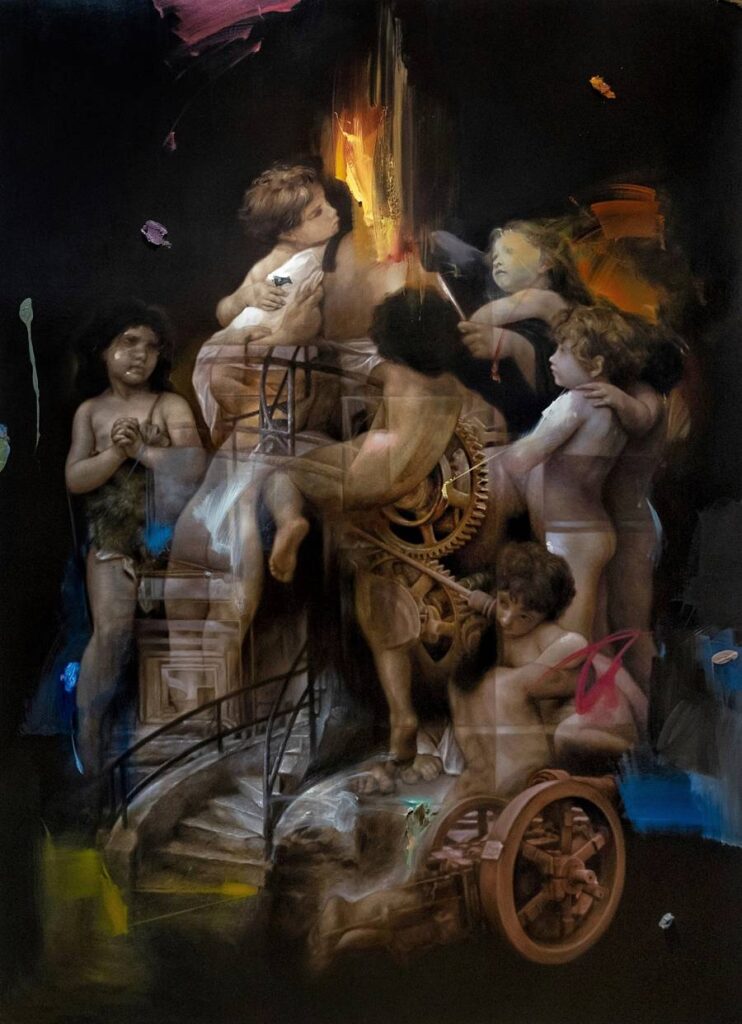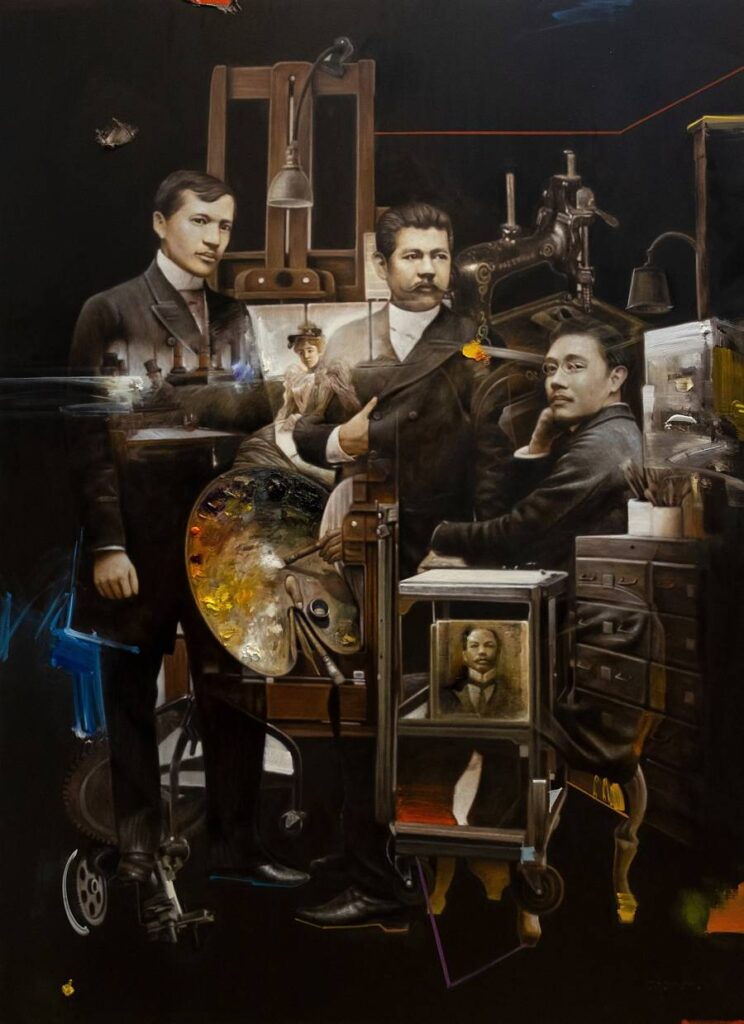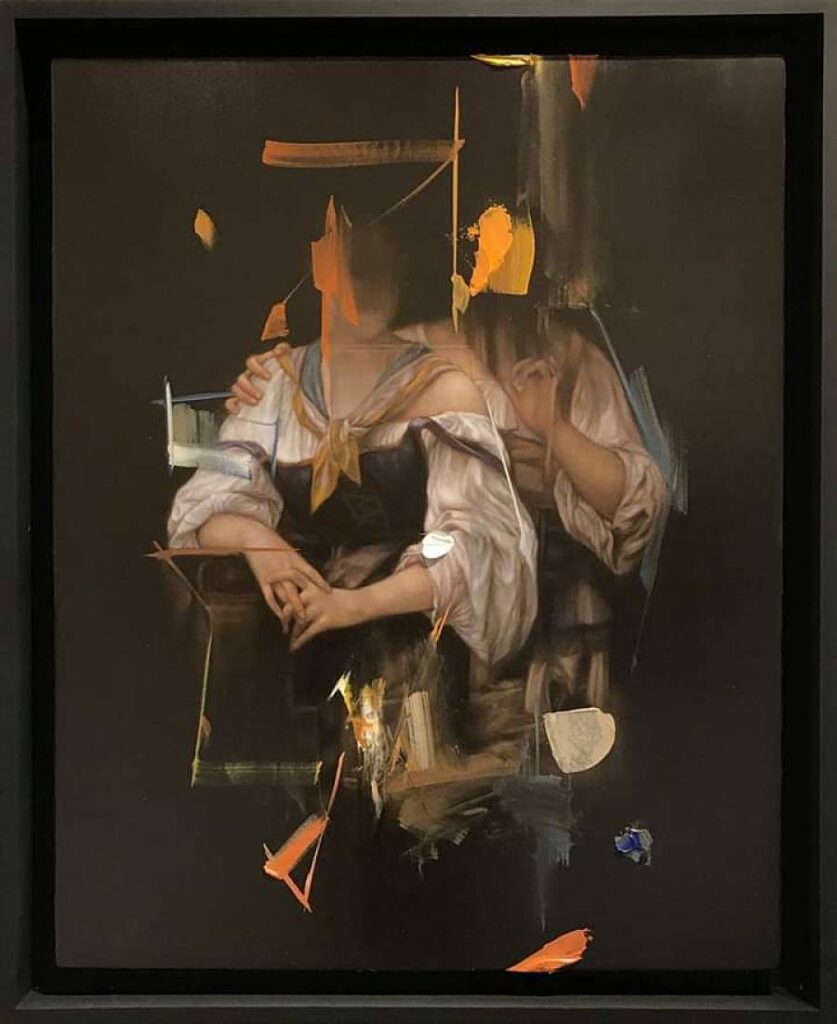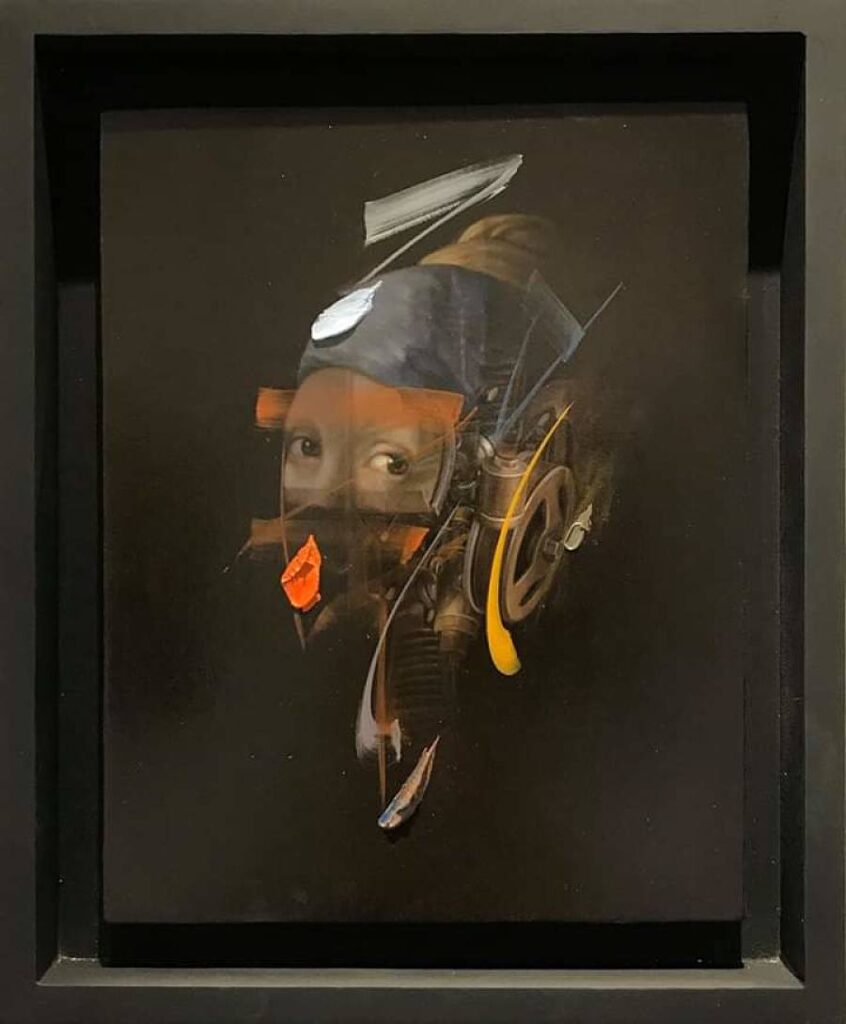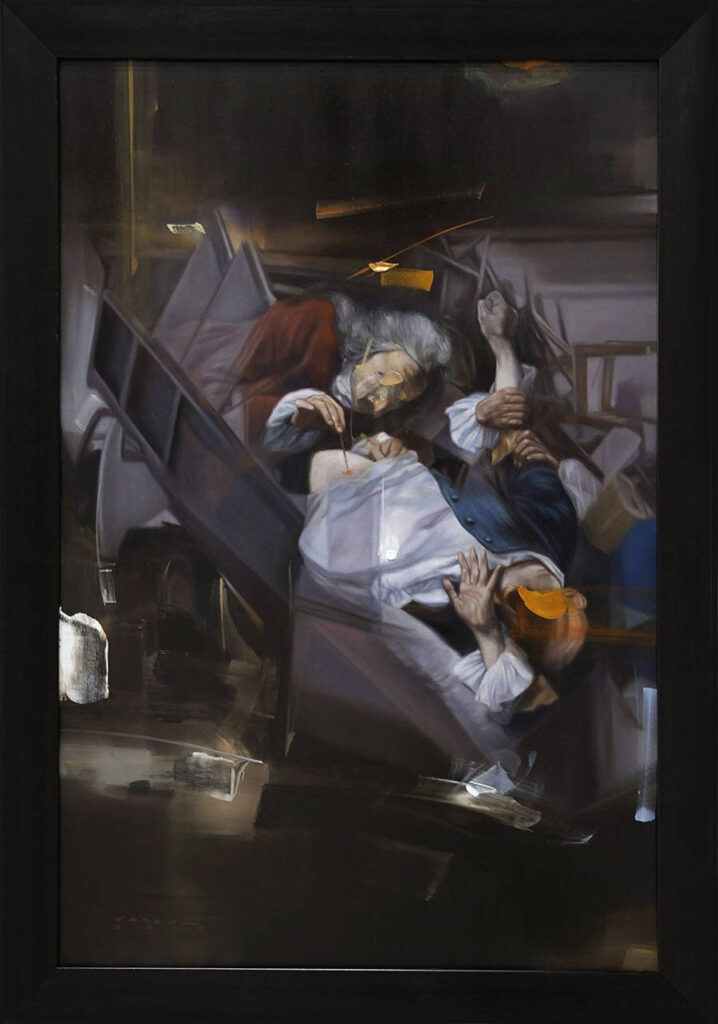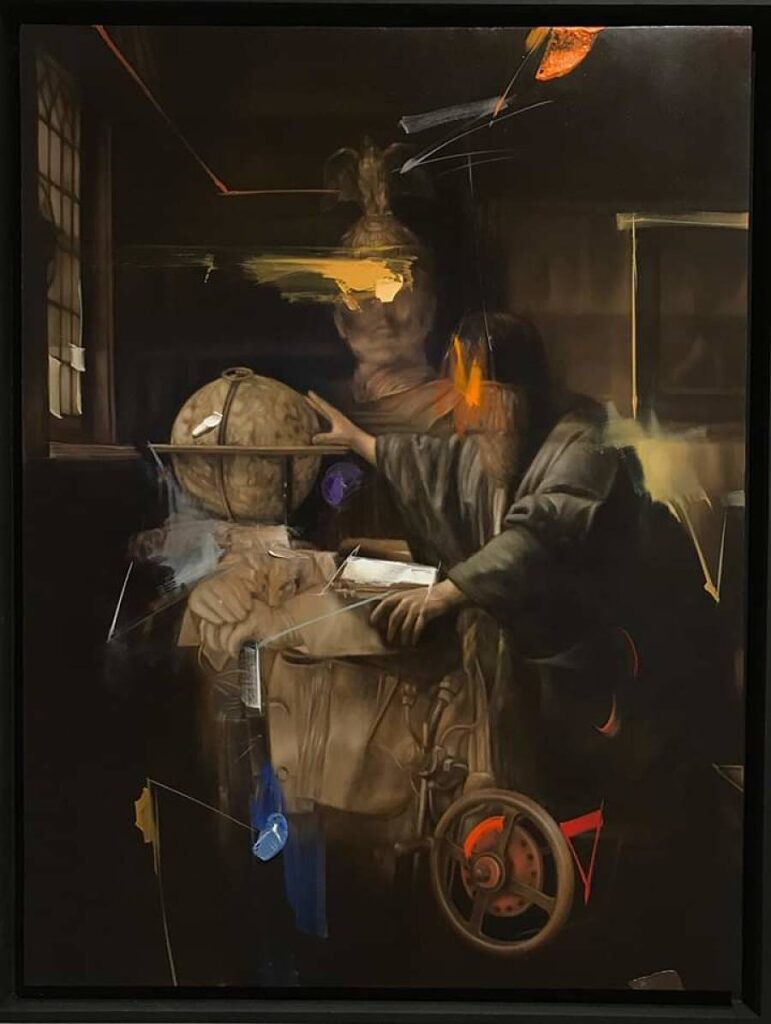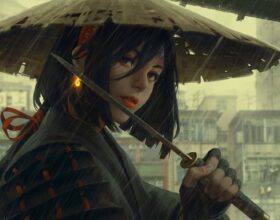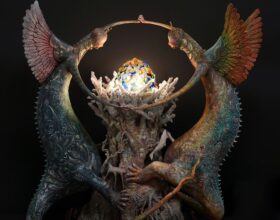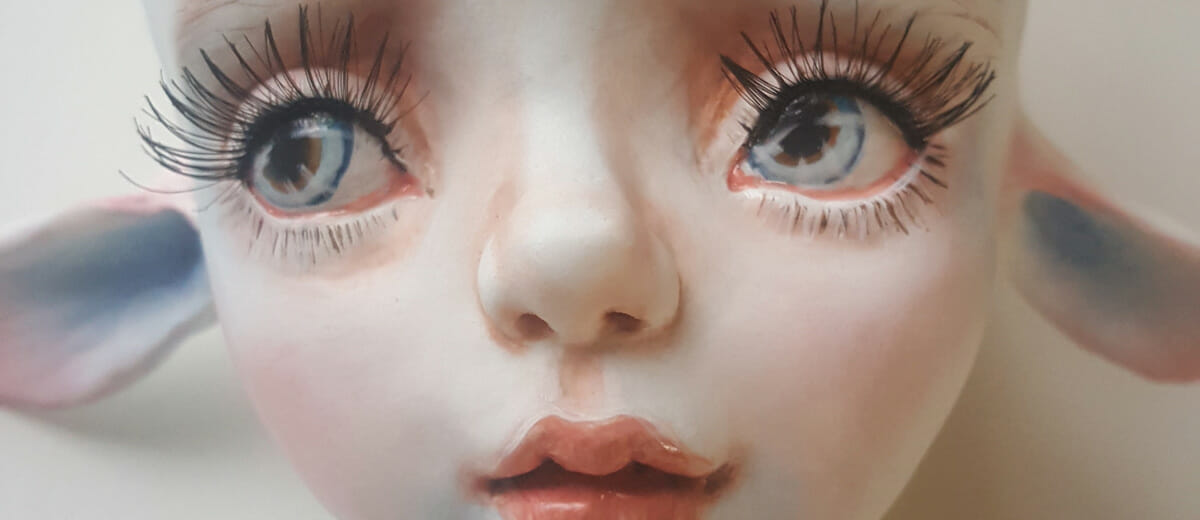When Joel Chavez set his sights to portray Neoclassicism with his flair, he recreated the paintings from the Baroque and Renaissance eras to reinvent his style. Rather than just copying the aesthetics of the artists from these eras and pasting them onto his canvas, the Filipino artist fused his reverence for machines, engines, woodworks, and objects of steampunk into his artistry, concocting a signature that blazes details in strokes and narratives in layers.
Chavez erased half of Johannes Vermeer’s Girl with a Pearl Earring’s face and replaced it with a small, metal ladder, a bronze-hued reel, or perhaps a sewing machine’s balance wheel, and a car’s exhaust pipe. Blotches and streaks of white, orange, yellow and gray paint finish the painting’s visual, the marks of expressionism the artist also harnessed. His William Adolphe Bouguereau’s The Charity loomed over the foreground displaying a machinery house with the mother’s face smudged in orange and mud-shaded paint. The two images ripple, cutting through the viewer’s eyes as one, but still distinctive, the version of self Chavez had yearned and succeeded in conceiving.
In this interview, Chavez narrates how his penchant for scrutinizing the details of machinery, artistry of Neoclassicism artists, and personal experiences unfolded and how, today, his artistic endeavors nod as well to the nuances of his local culture and history.
The fine and raw details of your paintings exude references to machinery and classical paintings. Why did you choose neoclassicism as your primary art practice? Did your educational background and upbringing influence you to take on this style?
I have not had formal training in the arts. I just joined a group of artists while I was enrolled at Polytechnic University of the Philippines, taking up an advertising course. The ultimate adventure with my co-artists there was to join contests, mainly art events. Later on, after several experiences in art media and insight during these affairs, we decided to try a new door of opportunity, which was to be a part of a gallery. That gallery was respectable as it dedicated its brand to be a dynamic trainer of new artists in the art industry. From that gallery exposure, I became harnessed to acquire and appreciate the Neoclassicism art system since, from the beginning, my interests were specifically in masterpieces that exhibited detailed workmanship. From that time, I was too enthusiastic and keen to comprehend well the Classical approach in arts. That inspired me to do my own initiative and do a self-study of the concepts and history of Neoclassical Arts.
I pondered on embracing machinery and engine into revitalizing Neoclassicism painting styles.
From there, I cultivated a deep understanding of Neoclassicism, and I began to recreate and reinvent paintings from the Renaissance and Baroque eras. Prior to my attempt to adhere to the historical paintings’ orientation and styles, I intended to leave a space for creativity and ensured not to incur plagiarism. What I did, I integrated those arts from the mentioned eras into machines, so the art merging would bring a modern touch plus I was so passionate at that time in embracing the details of the machinery and its structures like engines. The outcome was decent for the first one, so I discerned that I should make a sequel of similar themes, and I did them.
Ferris wheels, sewing machines, clockworks, and watch engines are some of the tools you incorporate in your painting. What incident made you decide to include these biopunk-like objects in your practice? How do you perceive their essence in your art and advocacy?
When I was a child, those objects were the things that I commonly encountered at home. My mom used to have a sewing machine and my other cousins nearby were into cars, and I used to watch their car engines and felt fascinated at scrutinizing their details. I realized that it would be feasible to integrate those detailed structures into my artworks. I pondered on embracing machinery and engine into revitalizing Neoclassicism painting styles. I also deemed that this could be magnificent to undertake for me to illustrate the representation of skilled workers into my works. What I normally do is to combine my desired subject, which is a kind of classical painting, and then place structures such as engine, machine, and woodworks, which I feel can be compatible with the job that I deem to be represented as one of the icons inside my work of art. Of course, it will vary depending on the storyline of my paintings. As for the clock, it is often a reminder of nurturing time as essential, just like the old phrase ‘time is gold.’
In your previous paintings, I have noticed the reference to classical artworks. Why did you choose to interpret them within the biopunk-like theme?
Basically, I feel fascinated by the use of detailed objects like engines, machines, woodworks, and the likes. I honestly feel delighted and hooked to incorporate them into my artworks. Again, I recognized the motivation I had to interpret and acquire more knowledge about classical paintings during my years at the university. Now, I merge them together.
I cultivated a deep understanding of Neoclassicism, and I began to recreate and reinvent paintings from the Renaissance and Baroque eras.
In your recent paintings, you have dabbled into the era of Spaniards and Filipiniana surrounded by antique or vintage objects while retaining your signature expressionist marks. How did this move happen? Have you always wanted to delve into this subject, and why? What’s the relevance of Filipiniana in your lifestyle?
I would like to see Philippine art be recognized internationally, one that makes us as competitive as Western Art. For this ambition of mine, I undertook an exhibition that combined Filipiniana and Classical paintings entitled “Time Stand Still” which became a preparation for my next exhibition, a Filipino-oriented show. Neoclassicism has been a part of my journey as an artist in this industry, but I realized that it is about time to go local and explore the greatness of the Philippine culture, heritage, and history, and stimulate new arts out of these, which can inspire the next generation as well.
In some of your artworks, I notice the appearance of a palette stuck between the objects. Does this represent you as an artist? How has art changed the way you perceive your life?
About that palette appearance, it intricately encompasses the memoir of Illustrados. We have learned the role of Illustrado in awakening patriotism from our history subjects, and I attempted to make them the focal point of my art. However, I chose Jose Rizal to be more emphasized in the figure with that palette to symbolize how our national hero, Jose Rizal, contributed to the progressive development of paintings and arts in his time. He was also an artist, so I put it there to accentuate a concept of artistry that one could emulate from seeing a palette. It could transcend a message of inspiration to my viewers. Honestly, my concept flow is that it would represent a scenario where these Illustrados bonded to indulge in art while cultivating a level of patriotism in the studio of Juan Luna.
I found myself mesmerized in merging two kinds of arts to reinvent remarkable masterpieces, and it was a personal rediscovery to establish my identity in this media representation.
I learn how to enhance the quality of my output especially when I exchange insight with my fellow artists in an art talk or brainstorming and painting session. Sadly, people have this perspective that being an artist is not a stable career, but just a kind of a hobby. However, for me, art has always been a remarkable and essential part of my existence, so I make sure that my paintings are masterpieces of a hobby and at the same time a professional career in progress to inspire the younger generation. When I create art, I have ample time to be myself and concentrate, so it is a good outlet for me to develop and sustain my innate capacity and also a way to escape the toxic reality surrounding humanities. It is like I am enjoying a career and a hobby all the time. It is a blessing for me.
You seem to have an attachment and fascination to the bygone years. Could you elaborate your penchant for history and literature? What particular stories or chunks of history in the past do you appreciate the most?
I became interested in Art History from Renaissance to Modern Art. Usually, I just watch some of the online documentaries on how the evolution of art happened, and now I would like to dedicate time to deeply understand Philippine History, especially the life of Jose Rizal since he became the national hero in my country. I would like to share these moments to make my viewers aware of how he contributed the essence of education and non-violence against invaders of the country to the Filipinos in his time. Jose Rizal was, and still is, a symbol of great heroism and that makes me feel that he is an ideal go-local theme of my art. I appreciate how Rizal tried to earn a quality education, be patriotic, and awaken the senses of Filipinos through his writings.
In some of your paintings, the facial features are botched or smudged. Is finding one’s identity a recurring theme in your practice? How essential is identity in art and life to you?
Before I accomplished this rigorous focus on classical art, I’d used to be engaged in creating portraits with facial features, then suddenly an expert in the field of art acted as my critic and asked me why I just concentrated on having portraits instead of something else, so I felt I would rather be more satisfied without facial expressions and integrated abstract to render a representation that would somehow convey that my art was in progress and evolving.
I found myself mesmerized in merging two kinds of arts to reinvent remarkable masterpieces, and it was a personal rediscovery to establish my identity in this media representation, plus establishing an identity as a professional artist is essential. Through this, there is a way to recall an artist’s artistry and style which is a significant one, along with the goal of a long-term career in a highly competitive market. With my artworks, they will help collectors distinguish my masterpieces as well.
Consequently, there will be easier access to who the artist is and what they do once they have their own identity. I think every artist has a strategy to highlight what they can devote to their audience and collectors in the best and unique way.
I realized that it is about time to go local and explore the greatness of the Philippine culture, heritage, and history, and stimulate new arts out of these, which can inspire the next generation as well.
As I go through each of your artworks I keep wondering, do you have overarching messages that you want to convey with your artworks?
Yes. I desire to convey values to my audience and art critics, wish that they would feel compelled to interpret the meaning, either literally or figuratively, behind the paintings, and stimulate their senses to evoke thoughts to reflect on afterward.
Do you have any shows you’d love to share with us?
Yes! My 4th solo exhibition, hosted by R gallery, opened September 17th!



